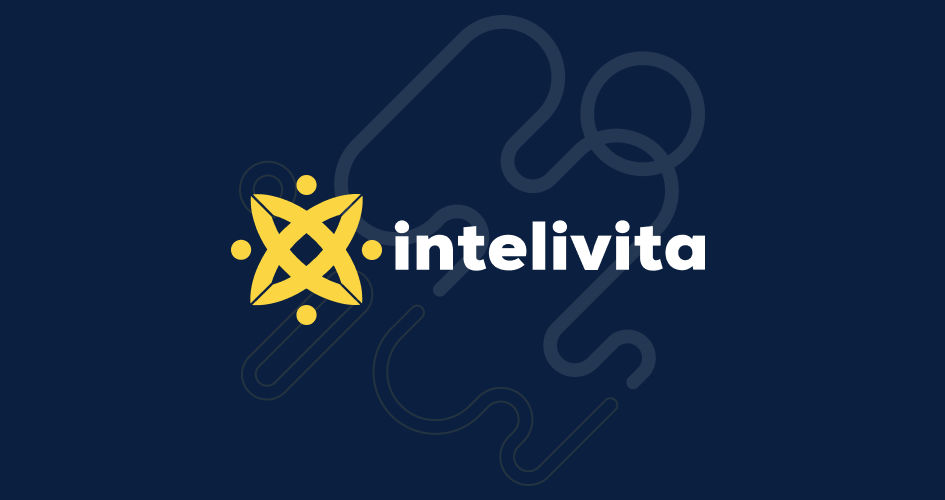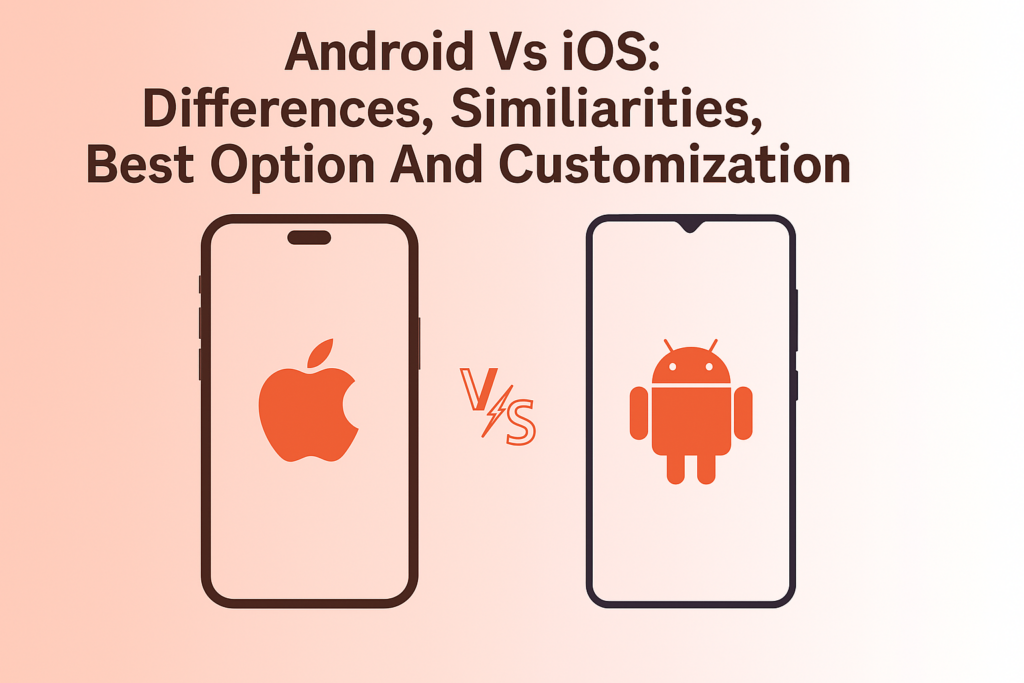The cost to develop a mobile app ranges from $10,000 to $18,000, depending on factors such as app complexity, type, and development team expertise.
For a Minimum Viable Product (MVP) with moderate complexity at $30/hour, estimated development costs are:
- Android App – $10,000 to $13,000
- iOS App – $10,000 to $15,000
- Hybrid App – $15,000 to $18,000
Investing in mobile app development requires balancing quality and cost. Lower budgets can limit advanced features, while a reasonable investment supports a more robust, user-friendly app.
How Much Does It Cost to Make an App by App Type?
App development costs vary by type, categorized into basic, moderate, and complex applications.
- Basic Apps (Cost: approx. $6,000): Basic apps offer limited features and focus primarily on displaying information with minimal user interaction. These are ideal for informational or entry-level applications.
- Moderate Complexity Apps (Cost: around $12,000): These apps include essential features like user accounts, data storage, and third-party integrations, providing moderate functionality and user engagement.
- Complex Apps (Cost: about $18,000): Complex apps support advanced features such as real-time updates, highly interactive interfaces, custom user experiences, and multiple backend integrations to handle large-scale data processing.
The cost to develop commonly requested app types, such as eCommerce, social networking, and service booking apps, starts at $10,000 and goes up to $50,000 for most categories. eCommerce apps can range slightly higher, from $10,000 to $60,000, depending on functionality, complexity, and platform requirements.
The table below outlines the cost of creating mobile applications based on popular app types.
| App Type | Cost Range |
| eCommerce | $10,000 – $60,000 |
| Service Booking | $10,000 – $50,000 |
| On-Demand Delivery | $10,000 – $50,000 |
| Social Networking | $10,000 – $50,000 |
| Educational | $10,000 – $50,000 |
| Gaming | $10,000 – $50,000 |
| Travel and Tourism | $10,000 – $50,000 |
| Event Management | $10,000 – $50,000 |
| News and Media | $10,000 – $50,000 |
| Real Estate | $10,000 – $50,000 |
The above table provides a cost range for developing popular app types across various industries and functionalities. These ranges reflect typical costs based on specific features, platform requirements, and additional integrations for each type.
How Much Does it Cost to Build an App by OS Platform?
The popular app development platforms include Android, iOS, Web App, Cross-Platform, and Hybrid. Each platform impacts the overall development budget based on its specific requirements and complexity.
Android App Development
Developing an Android app costs $10,000 to $13,000. Android apps require a codebase optimized for various devices, typically built in Kotlin or Java, with extensive testing for compatibility across models and screen sizes.
iOS App Development
iOS app development costs $10,000 to $15,000. Built for Apple devices like iPhone and iPad, iOS apps use Swift or Objective-C, providing streamlined development due to fewer device variations.
Hybrid App Development
Hybrid app development costs $15,000 to $18,000. Hybrid apps share code across platforms, combining web and native elements. Built with frameworks like Apache Cordova or Ionic, they are cost-efficient but may have lower performance than fully native apps.
Web App Development
Web app development ranges from $10,000 to $20,000. Web apps run in browsers and are accessible on any internet-enabled device but lack native functionality like offline access and push notifications. Common technologies include HTML5, CSS, and JavaScript.
Cross-Platform App Development
Cross-platform app development costs $10,000 to $18,000. Using a single codebase for Android and iOS, these apps—often developed with React Native or Xamarin—reduce development time and costs, though some native functionality may be limited.
Flutter App Development
Flutter app development costs $12,000 to $20,000. Using Google’s Dart language, Flutter apps run on both iOS and Android, offering a near-native experience at a lower cost than separate native apps.
This list outlines the cost variations across different OS platforms, providing insight into how platform choice impacts the overall app development budget.
How Much Does It Cost to Build an App Based on Developer Location?
The app development location significantly impacts the cost, with hourly rates varying widely by region. For example, hiring an app developer in the U.S. is typically 3-4 times more expensive than in India due to differences in labor costs and market rates.
The table below shows average hourly rates for app development by region:
| Region | Price (Hourly) |
| USA | $100 |
| Western Europe | $80 |
| Australia | $90 |
| Eastern Europe | $50 |
| India | $25 |
These regional cost differences significantly influence the overall budget required for mobile app development.
How Much Does It Cost to Hire a Freelance App Developer?
Hiring an app developer costs $25 to $80 per hour based on location and expertise.
Developers in North America and Western Europe charge $80 to $100 per hour, while rates in India and Southeast Asia range from $25 to $50 per hour.
Freelance developers are ideal for small projects or specific tasks but may need additional project management.
Here’s a general breakdown by developer level:
- Junior Developer: $25 – $35 per hour
- Mid-Level Developer: $40 – $70 per hour
- Senior Developer: $80 – $100 per hour
How Much Does It Cost to Hire an App Development Agency?
Hiring an app development agency like Intelivita typically costs $10,000 to $50,000 for small to medium apps, with complex projects ranging from $50,000 to $200,000.
Agencies provide full-service teams covering project management, design, development, and quality assurance.
North American agencies typically charge $100 to $150 per hour, while agencies in Eastern Europe and Asia charge $30 to $70 per hour.
A report by Clutch indicates that agencies in North America typically charge $100 to $150 per hour, while those in Eastern Europe and Asia range from $30 to $70 per hour, depending on the agency’s expertise and location.
How Much Does It Cost to Hire an In-House App Development Team?
Hiring an in-house team costs $100,000 to $500,000 per year, depending on team size and expertise. This includes salaries, benefits, and operational costs. In-house teams offer direct control and collaboration but are a major investment suited for long-term projects.
How Much Does It Cost to Outsource to an Offshore Development Team?
Outsourcing to an offshore development team costs between $20 and $70 per hour. Rates vary by region, with Eastern Europe, Asia, and Latin America typically offering more competitive pricing. For example:
- Eastern Europe: $30 – $60 per hour
- Asia (e.g., India, Philippines): $20 – $50 per hour
- Latin America: $30 – $70 per hour
Offshore teams are effective for reducing costs while maintaining access to skilled developers. However, managing time zones, language barriers, and project oversight may require additional coordination.
How Much Does It Cost to Use a No-Code/Low-Code Development Platform?
Using a no-code or low-code development platform generally costs $50 to $500 per month for subscription fees, depending on the platform and level of access required. For instance:
- Basic Plans: $50 – $100 per month (suitable for simple apps with limited customization)
- Advanced Plans: $200 – $500 per month (supports more complex apps with advanced features)
No-code/low-code platforms like Bubble, OutSystems, and AppGyver enable app creation without traditional coding. These platforms are ideal for building MVPs or prototypes quickly and affordably but may lack the customization and scalability of fully coded apps.
What Are the Hidden Costs of App Development?
Hidden app development costs refer to expenses that founders may overlook initially but are essential for maintaining app functionality and reaching users. Key hidden costs include maintenance and marketing.
Hidden Cost 1: Maintenance Cost
Yearly maintenance cost is around 25% of the total app development cost. According to Statista, annual maintenance costs for mobile applications are commonly around 20-25% of the initial development investment.
For an app developed at $20,000, this means setting aside approximately $5000 per year for maintenance expenses. This budget covers essential updates, bug fixes, and ongoing optimizations needed to keep the app functional and up-to-date.
- Bug Fixes: Minor fixes to improve app performance, typically costing $1,000 to $2,000 annually.
- OS Updates: Ensuring compatibility with the latest iOS or Android updates, averaging $3,000 to $5,000 per update cycle.
- Feature Enhancements: Adding new features or improving existing ones, which can cost $2,000 to $10,000, depending on complexity.
- Server and Hosting Fees: Server costs vary but generally range from $20 to $100 per month.
- Security Monitoring: Regular checks to protect user data, often costing $1,000 to $3,000 annually.
These costs help maintain app performance, security, and user satisfaction over time.
Hidden Cost 2: Marketing Cost
Marketing costs for mobile apps range from 2x to 3x the initial App creation expenses, according to data from Clutch. For a $50,000 app, plan for an annual marketing budget of $100,000 to $150,000. This budget covers activities such as building information architecture to educate users, optimizing for search engines to attract organic traffic, running targeted email campaigns, launching on platforms like Product Hunt, and using social media for app promotion and user engagement.
Now that you have a detailed knowledge of the price of creating a mobile application.
How Much Does It Cost to Make an App by Yourself?
It costs $1,000 to $3,000 to make an app by yourself, covering essential tools, subscriptions, and learning resources. This includes costs like $50 to $500 per month for no-code/low-code platforms (Bubble, Adalo) or, if coding, $99/year for an Apple Developer account or $25 lifetime for Google Play Console.
Design tools like Figma or Adobe XD cost $12 to $20 per month, and online courses for app development average $50 to $200 on platforms like Udemy or Coursera. Independent app creation is feasible for simpler apps but requires investment in tools, accounts, and time for learning each stage of development.
A 2023 TechCrunch report states that building an app independently requires significant time and often limits advanced features, making it ideal for simple apps or prototypes rather than complex applications.
What are the Common Pricing Models for App Development?
The common pricing models for app development include the Fixed-Price Model, Hourly Rate Model, and Time & Material Model. Each model has distinct cost structures, explained below:
- Fixed-Price Model: In this model, the total project cost is agreed upon upfront based on defined requirements. Suitable for smaller projects with a clear scope, this model typically ranges from $10,000 to $50,000. It provides cost certainty but may limit flexibility for changes.
- Hourly Rate Model: This model charges based on developer hours worked, ideal for projects where requirements may evolve. Rates vary widely by region and expertise, generally costing $25 to $150 per hour. It offers flexibility but may lead to higher overall costs if the project scope grows.
- Time & Material Model: This model combines hourly rates with material costs for resources used. It’s suited for complex projects with variable needs, typically costing between $15,000 and $100,000+ depending on project duration and complexity. This model allows adaptability but requires close budget monitoring.
Each pricing model has advantages based on project size, budget, and flexibility requirements.
How Do App Development Costs Vary Across Different Stages?
Each stage in the app development process contributes to the overall cost. Here is a breakdown of each stage and its percentage of the total budget:
- Discovery Phase The discovery phase costs approximately 20% of the budget. This stage involves:
- Market Analysis: Evaluating demand, market size, trends, and competition, led by business analysts and data scientists.
- Competitor Analysis: Assessing competitors’ strengths and weaknesses to refine the business model.
- Budgeting: Calculating total development costs with input from tech leads, UI/UX designers, and project managers.
- UI/UX Design Phase The design phase represents 20% of the total cost. In this phase, designers create visual elements, including:
- Wireframes: Initial layouts that outline app structure.
- Interactive Prototypes: Demonstrations of app functionality.
- Mockups: High-fidelity visuals reflecting final designs.
- Coding Phase The coding phase, which includes both backend and frontend development, uses 50% of the budget:
- Backend Development (30% of Total Cost): Server-side functionalities using technologies like Java and Python, supporting app functions.
- Frontend Development (20% of Total Cost): User-facing features built with tools like Swift and React Native, ensuring usability and aesthetics.
- App Launch Launching the app requires 10% of the budget, covering:
- App Store Fees: Costs for listing the app on platforms like Apple’s App Store and Google Play Store.
- App Store Optimization (ASO): Strategies for improving app visibility, including testing visuals, descriptions, and animations.
This breakdown clarifies the cost allocation across each development stage, providing a comprehensive understanding of mobile app development expenses.
App Development Cost By Examples
We’ll use three diverse examples as case studies to help you understand the cost of building a mobile application.
| App Example | App Category | App Cost | App Features |
| Revolut | Fintech App | $25,000-$40,000 | Peer-to-peer transfer, currency exchange, secure login, profile personalization, biometrics |
| Uber | Ride-Hailing App | $25,000-$30,000 | Real-time tracking, card linking, driver review, in-app location |
| Social Media | $25,000-$30,000 | Reels, QR codes, Boomerangs, stories, direct messaging (DMs) | |
| Tinder | Dating App | $15,000-$20,000 | In-app messaging, profile customization, swipe-to-match, real-time location |
| Netflix | Streaming App | $30,000-$50,000 | Library, in-app payment, video download, streaming, settings |
This table provides a clear overview of each app example, its category, cost, and main features. Let me know if you need further customization!
What Factors Affect App Development Costs?
The common factors affecting app development costs are the business logic of the app, technology architecture, UI/UX design, and core features of the mobile application.
Factor 1: Business Logic of the App
In mobile app development, business logic or domain logic refers to the core function of the app, its business model, and the outcomes users get from the application.
The app’s business logic provides direction to the following attributes:
- The overall size of the mobile application,
- The ideal tech stack for developing the solution,
- The size of the development team,
- Timeframe for completing the application,
- QA validation process required,
- The dependable needed.
Generally, mobile application development with more complex business logic is more expensive. This is due to its complex architecture and multiple functionalities that the programmer needs to implement.
Factor 2: Technology Architecture
Technology architecture in mobile app development entails the aggregation of logical components that are required to create a functional application. The software architecture is a blueprint that programmers will follow to create a deliverable.
The technology architecture attributes that impact costs are:
- The tech stacks,
- Scalability,
- Multi-tenancy.
Since tech architecture is a workflow mapping of how the app operates, it’s only logical that the longer the workflow, the more expensive the mobile application.
A good technology architecture has its root in the app discovery phase. This phase is a step whereby the development team gathers requisite information about the target audience, solution’s objectives, founder’s expectations, and competitors.
An ideal discovery phase will carry a budget of about 10% of the complete development budget–this is partly due to its research-intensive nature, and it involves input from every team member.
The result from the discovery phase allows the CTO or any tech lead in charge to map out the technology architecture of the solution appropriately.
Factor 3: UI/UX Design
The UI/UX design is a prototype or mock-up detailing the look and user experience end users will derive from using a solution.
It also provides insight to coders on what features and functionalities they’ll need to create within the mobile application for it to achieve the founder’s ultimate objective.
UI/UX attributes that influence app development cost:
- The number of screens needed to complete a process,
- The type of user interface (Native UI’s cost more than hybrid interfaces),
- The number of animations in the design.
The higher the number of screens and animations in the design, the costlier the app developmental fee.
Factor 4: Core Features of the Mobile Application
The core features of a mobile app are those necessary for it to perform its primary features. Here, we’ll consider some key elements needed for each mobile app niche:
| Niche | Key Features |
| Fintech (Banking) | Peer-to-peer transfer, connection with external service providers, account balance, payment processor, and transaction history. |
| Edtech | In-app video chat, in-app messaging feature, subject categorization, feedback sections. |
| Social Media | Messaging system, real-time notifications, content sharing element, and profile personalization. |
| HealthTech | Appointment scheduler, video-conferencing, in-app reminders and notifications, symptom checker, healthcare tips. |
As seen in the table above, the product niche highly influences the cost of software development. Take fintech app development for example; there are lots of key features it must have to function appropriately, with each of them being highly complex.
Also, the features are sensitive, as a single error can lead to a loss of funds. This makes the cost of creating a fintech application naturally higher than in other niches.
For more exposé on these factors, then read this article.
What’s more? There are some app development costs to take into account.
Is it Necessary to Update an App Regularly?
Yes. Regular updates are essential to maintain compatibility with OS changes, improve security, fix bugs, and keep users engaged with new features. Without regular updates, an app’s performance and user experience may decline over time.
Can a Small Business Afford App Development?
Yes. With various pricing models, smaller budgets can still support app development, especially using cost-effective options like no-code platforms or outsourcing to offshore developers. These methods help reduce costs while meeting essential functionality.




